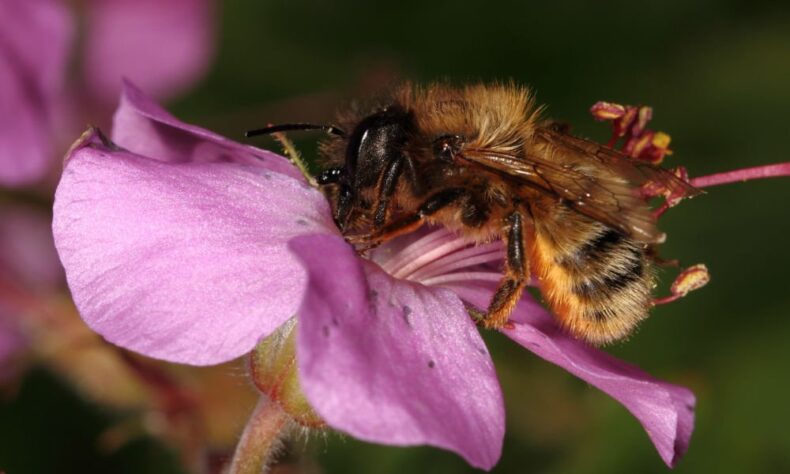Favourite Gluten-Free Items Available at Spud May National Celiac Awareness Month, but every day Spud…
If you haven’t already heard, our honey bees are in trouble.
Across North America, honey bee populations are dying off as a result of neonic pesticides, an epidemic known as ‘colony collapse disorder’, and habitat loss. In fact, over the past seven years, both the US and Canada have lost one third of their managed honey bee colonies. That’s an alarming rate if I ever heard one.
We depend on pollinators (like bees) to sustain healthy agricultural crops, as well as healthy ecosystems.
Pollinators transfer pollen and seeds from one flower to the next, which fertilizes the plant so that it can grow and produce food. A huge amount of our crops, including most fruits, vegetables, and nuts, require animal-mediated pollination. Without pollinators, our diets would become severely limited.
Beyond our own food systems, the functionality of the ecosystem depends on the pollination of wild plants, as they are an integral part of the food chain. So, the dwindling honey bee populations have gotten a decent amount of media attention over the years.
However, among all of this depressing hum-drum of bee death, there is a Herculean bee out there that has diligently continued to pollinate, uninterrupted by the factors which are wiping out the honeybees. This notoriously strong and independent bee doesn’t produce honey, but has the pollinating power of 60 honey bees—60! This special bee that is adding an optimistic note to the bee conversation is known as the mason bee.
The mason bee is actually a native North American bee, and has some pretty impressive stats in terms of productivity and manageability in beekeeping. Here’s what makes them great:
- They’re solitary, so there’s no hives to maintain
- They’re easy to raise
- They’re far more productive at pollinating than honey bees
- They’re not aggressive, and the male bees don’t even have a stinger!
And did you know that you can make a huge difference for both mason and honeybees alike by making a bee-friendly environment in your garden? A lot of people think that nature is ‘out there’, but bees actually thrive in bee-friendly urban environments, as this usually means short travelling distances. If you’re interested in attracting bees to your garden, consider building a bee box, and/or build up your garden with nectar and pollen, plants that flower at different times, native flowers, and flowers that are blue, purple, violet, white and yellow (bees are especially drawn to these colours).
If you’re interested in beekeeping, mason bees have been recommended as an easy starter backyard bee to help out your garden. Contact your local bee organization and find out what your options are. Get your family involved, and it is sure to be an incredibly rewarding and educational experience for everyone.
What has your experience been in attracting or keeping bees?




